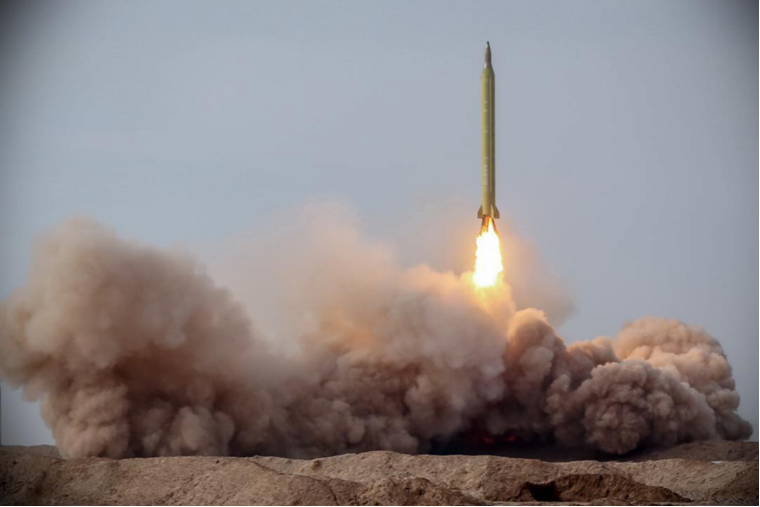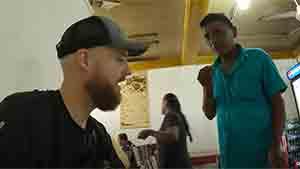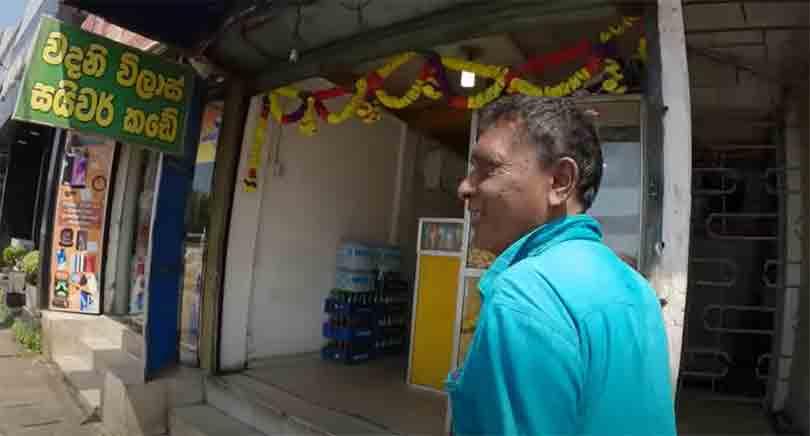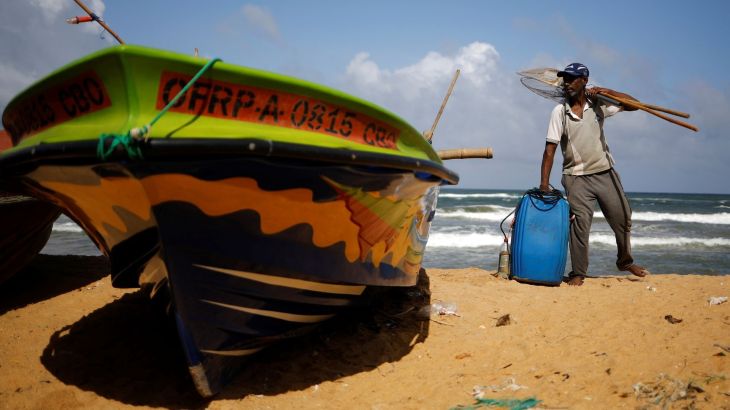By Sena Thoradeniya
1. Introduction
In this essay we do not intend to discuss the (i) surge of NPP/JVP activities in recent times displayed by its public rallies and reality of such activities (ii) Anura Kumara’s visits to some foreign countries (iii) visits of foreign envoys to NPP headquarters (iv) election forecasts of US funded research institutes”, political careerists of dubious nature who earlier campaigned for Yahapalana project and (iv) glorification and enthrallment of so-called political analysts who are in RAW pay list – those eyeing for top diplomatic posts something more than what they have grabbed from MR and Sirisena; in our previous essays we have examined these issues to a certain extent.
It is time for the NPP/JVP and their official and unofficial mouthpieces who are engaged in propagating false theories and false predictions, to investigate the ground realities, moving their feet away from armchairs and ivory towers. Mao wrote in his poem Two Birds: A Dialogue” (1965):
A sparrow in his bush is scared stiff
‘This is one hell of a mess!
O I want to flit and fly away.’
‘Where, may I ask?’
The sparrow replies,
‘To a jeweled palace in elfland’s hills.’
(The sparrow in a bush said when I flit and make a leap, I rise some dozens of feet then come back down and hover on the bush).
2. Two Massive Barriers the NPP Should Overcome
There are two massive barriers the NPP has to overcome, obtaining (i) 51% of the votes cast in a Presidential election from present 3% (a surge of 48%) and (ii) 113 seats from present 3 seats in a Parliamentary election, an increase of 110 seats respectively, which are beyond imagination even of an insane person.
Not content with their predictions of a mandate consisting of 113 seats or above, now some political tricksters say that the NPP will get 2/3 majority, in other words, 150 seats in a Parliamentary election; a wag asked in Sinhala is that 2 (seats) from the present 3? One such charlatan who predicts 2/3 for NPP, is the man who was in the forefront in bringing Gamarallage Sirisena, the Polonnaruwa Grama Sevaka to Presidential House. Writing a book immediately after the completion of yahapalana project this man dedicated his book to Athurelye Ratana, equating Ratana to Kadahapola Unnanse who faced the imperialist’s bullet heroically in 1848. People who can disgrace our national heroes can do any mean thing to earn a penny for their supper. It was rumored that Ratana displayed his Kadahapola bravery” in the Royal Park incident a few years later!
3. Presidential Elections 2019
At the Presidential Elections held in 2019 Gotabaya Rajapaksa (SLPP) polled 6,924,255 votes (or 52.25%). His closest contender Sajith Premadasa (SJB) secured 5,564,239 (or 41.99%), followed by Anura Kumara (NPP) who obtained 418,553 (or 3.16%) votes. There were 15,992,096 registered electors of which 13,387,951 (or 83.72%) electors used their voting right.
Total number of votes polled by Anura Kumara from each electoral district are given below: Colombo – 53,803 (or 3.93%); Gampaha – 61,760 (or 4.28%); Kalutara – 27,681 (or 3.41%); Mahanuwara – 23,539 (or 2.52%); Matale – 8,890 (or 2.62%); Nuwara Eliya – 5,891 (or 1.24%); Galle – 27,006 (or 3.72%); Matara – 23,439 (or 4.21%); Hambantota – 26,295 (or 6.24%); Jaffna – 1,375 (or 0.37%); Vanni – 1,156 (or 0.54%); Batticaloa – 2,304 (or 0.76%); Digamadulla – 7,460 (or 1.81%); Trincomalee – 3,730 (or 1.61%); Kurunegala – 36,178 (or 3.21%); Puttalam – 12,912 (or 2.84%); Anuradhapura – 22,879 (or 3.94%); Polonnaruwa – 12,284 (or 4.42%); Badulla – 14,806 (or 2.64%); Moneragala – 11,235 (or 3.52%); Ratnapura – 18,887 (or 2.53%) and Kegalle – 15,043 (or 2.61%).
The simple question we ask from the predictors of an Anura Kumara victory at the next Presidential Elections is, how he is going to increase his percentage of votes from the present 3.16% to 50% and 1 vote? Based on 13,387,951 total votes polled at the Presidential Elections held in 2019 how Anura Kumara is going to poll 6,693,976 (50%) votes at the next Presidential Elections, an increase of 6,275,423 votes (from present 4 lakhs of votes to 62 lakhs of votes)? The above-mentioned statistics show that this is a fallacy, a delusion, a chimera in the brains of these predictors. Tell it to the marines, but not to me!
4. Parliamentary Elections: 113 and 2/3 Majority Myth
Let us examine overcoming 113 barrier and the latest 2/3 majority prediction.
In 2020, SLPP or Pohottuwa polled 6,853,693 (68 lakhs) votes (59.09%) and obtained 145 seats (128 elected district – wise and 17 from national list). Total polled in 2020 was 12,343,309 (or 75.89%) and the number of registered electors were 16,263,885. if we base our argument on 2020 electoral registers, to get150 seats the NPP should poll more than 70 lakhs of votes island wide. There are 22 electoral districts in Sri Lanka. If we divide 70 lakhs by 22 simply, without forcing the readers to get lost in a labyrinth of absurd statistical computations, Malimawa should poll an average of 318,181 (3 lakhs or more) from each polling district.
It should be emphasized here, that most of these social media predictors are not aware of what is meant by an administrative district, an electoral district and even by a polling division.
5. Jaffna, Vanni, Batticaloa, Trincomalee, Digamadulla and Nuwara Eliya Hoodoo
Can anyone imagine Malimawa polling an average of 318,181 (3 lakhs or more) or more votes from Jaffna, Vanni, Batticaloa, Trincomalee, Digamadulla and Nuwara Eliya electoral districts? If so, they should get their heads examined. In 2020 NPP obtained only 853 votes (or 0.24%) (as of 571,848 registered electors and placed 16th) from Jaffna electoral district; 662 votes (or 0.32%) (as of 287,024 registered electors and placed 16th again) from Vanni electoral district; 348 votes (or 0.12%) (as of 409,808 registered electors and placed 17th) from Batticaloa electoral district; 5060 votes (or 1.31%) (as of 513,079 registered electors and placed 8th) from Digamadulla electoral district; 2226 votes(or 1.05%)(as of 288,868, registered electors and placed 6th) from Trincomalee electoral district; 5043 votes (or 1.19 %) (as of 577,717 registered electors and placed 6th again) from Nuwara Eliya electoral district respectively.
Accordingly, to get the district average of 318,181 votes, NPP should poll (318,181- 853) 317,328 more votes from Jaffna; 317,529 more votes from Vanni; 317,833 more votes from Batticaloa; 313,121 more votes from Digamadulla; 315,955 more votes from Trincomalee; and 313,138 more votes from Nuwara Eliya electoral districts respectively which are implausible and inconceivable. It will happen only when pigs fly” or a black crow turns its colour to white!
Thus, NPP cannot poll 1,909,086 (or 19 lakhs= 318,181x 6) votes from the above six electoral districts. How can NPP compensate 19 lakhs of votes, what it failed to obtain from the above 6 electoral districts? The simple answer is that it must get that from the other 16 electoral districts.
6. Compensating the Loss of 19 Lakhs of Votes
We divide 70 lakhs by 16 (other electoral districts). Accordingly, NPP should get 437,500 from each of these electoral districts. Is it a reality? The vote base of NPP in 2020 in Colombo electoral district was 67,600 (or 5.72%); in Gampaha electoral district : 61,833 (or 5.03%); Kalutara electoral district : 33,434 (or 4.77%); Mahanuwara electoral district : 25,797 (or 3.17%), Matale electoral district : 7,542 (or 2.62%); Galle electoral district : 29,963 (or 4.91%); Matara electoral district : 37,136 (or 7.76%); Hambantota electoral district : 31,362 (or 8.39%); Kurunegala electoral district : 36,290 (or 3.74%); Puttalam electoral district : 9,944 (or 2.58%); Anuradhapura electoral district : 24,492 (or 4.83%); Polonnaruwa electoral district : 6792 (or 2.77%); Badulla electoral district : 19,308 (or 3.87%); Moneragala electoral district : 11,429 (or 4.07%); Ratnapura electoral district : 17,611 (or 2.72%); and Kegalle electoral district : 14,033 (or 2.81%).
The two elected members of NPP were elected from Colombo and Gampaha electoral districts respectively. Only otherelectoral districtswhich exceeded the5% cutoffpoint were Hambantota (8.39%) and Matara (7.76%) electoral districts, supposed to be the strongholds of NPP.The other districts which came closer to 5% cutoff point were Galle (4.91%), Anuradhapura (4.83%) and Kalutara (4.77%)electoral districts respectively. But the most favourable district Hambantota was unable to elect an NPP MP.
7. A Comparison of Presidential Elections of 2019 and Parliamentary Elections of 2020
It would be interesting to make a comparison of total number of votes the NPP polled in the Presidential Elections of 2019 and Parliamentary Elections of 2020 respectively. This would be an eyeopener to false predictors. Within a short period in certain electoral districts the NPP gained a little and in certain electoral districts it failed to maintain what it polled a few months ago. These statistics are self-explanatory which does need any analysis.
Colombo: 53,803 and 67,700 (a gain of 13,897 votes); Gampaha : 61,760 and 61,833 ( a gain of 73 votes); Kalutara : 27,681 and 33,434( a gain of 5,753 votes): Mahanuwara – 23,539 and 25,797( a gain of 2,258 votes): Matale – 8,890 and 7,542(a loss of 1,348); Nuwara Eliya – 5,891 and 5,043 (a loss of 8,48); Galle: 27,006 and 29,963 ( a gain of 2,957 votes ); Matara – 23,439 and 37,136 ( a gain of 10,130 votes ); Hambantota – 26,295 and 31,363( a gain of 5,068 votes ); Jaffna – 1,375 and 853 ( a loss of 522 votes ); Vanni – 1,156 and 662 ( a loss of 634 votes ); Batticaloa – 2,304 and 348 ( a loss of I,956 votes ); Digamadulla – 7,460 and 5060 ( a loss of 2,400 votes );Trincomalee – 3,730 and 2,226 ( a loss of 1,504 votes ); Kurunegala – 36,178 and 36,290 ( a gain of 112 votes ); Puttalam – 12,912 and 9,944 ( a loss of 2,968 votes ); Anuradhapura – 22,879 and 24,492 ( a gain of 1,613 votes ); Polonnaruwa – 12,284 and 6,792 ( a loss of 5,492 votes ); Badulla – 14,806 and 19,308 ( a gain of 4,502 votes ); Moneragala – 11,235 and 11,429 ( a gain of 194 votes ); Ratnapura – 18,887 and 17,611 ( a loss of 1,276 votes ); and Kegalle – 15,043 and 14,033( a loss of 1,010 votes ).
At all Island level the NPP, at the 2020 Parliamentary Elections polled 445,958 (or 3.84%), a gain of 27,405 votes than what it polled at the Presidential Elections (418,553 or 3.16%).
So, the predictors who predict an impressive victory to the NPP at the next Parliamentary Elections should explain to the voters whether the NPP is attempting to fill ballot boxes, as our villagers say with kadju eta and kos eta (with cashew nuts and jackfruit seeds)!
8. Zero Votes for All Other Candidates in Hambantota?
In 2020 there were 493,192 registered electors in Hambantota electoral district and SLPP, SJB and UNP polled 280,881 (or 75.10), 51,758 (or 13.84%) and 5017 respectively (a total of 337,656 votes). NPP polled only 31,362.
For NPP to obtain more than 437,500 of votes from Hambantota electoral district consisted of 4 electoral divisions, the present Pohottuwa MPs (in order of preferential votes) Namal Rajapaksa (son of MR, former Minister, new Pohottuwa National Organiser : 166,660 votes), D.V. Chanaka (present State Minister: 128,805 votes), Pohottuwa/ SLFP MP, Mahinda Amaraweera (present Minister:123,730 votes), Chamal Rajapaksa (MR’s elder brother, former Speaker and Cabinet Minister: 85,330 votes), Upul Galappaththi (63,369 votes), Ajith Rajapaksa (present Deputy Speaker: 47,375 votes) respectively, SJB MP Dilip Wedaarachchi (former Minister: 25,376 votes) and UNP candidates (5,017 votes) all will not get a single vote! That will happen only when hell freezes over” or according to the Sinhala saying only after we witness green foliage on a Mol Gaha (pestle made of kittul wood).
Here we develop an argument that even from Hambantota electoral district, an electoral district more favourable to NPP, it cannot poll 4 and half lakhs or more votes. This argument applies to other electoral districts too. So how can NPP get 113 seats or 2/3 majority from the country?
9. Registered Electors Less Than What NPP Should Poll?
We take two more electoral districts, Polonnaruwa and Moneragala. Registered electors in each of these districts were less than 4 lakhs. There were only 331,109 registered electors in Polonnaruwa and 372,155 registered electors in Moneragala. If all vote for NPP in these two electoral districts NPP cannot reach 4 lakhs from each of these districts and claim for the magical figure of 113 or 2/3 majority. In 2020 from Polonnaruwa NPP polled only 6,792 votes (2.77%) and from Moneragala polled only 11,429 (or 4.07%).
10. NPP Should Poll Ten Lakhs or More from Some Electoral Districts?
For the sake of a meaningless argument we say to compensate the loss from other electoral districts NPP must get a massive vote, at least more than 10 lakhs of votes from Colombo, Gampaha, Mahanuwara and Kurunegala electoral districts, as some pollsters opine that the person/party who/which wins these electoral districts has a better chance of winning. But in 2020 NPP polled only 67,600 votes (or 5.72% getting I seat, thanks to Premadasa introduced 5% cutoff point) from Colomboelectoral district, 61,833 votes (or 5.03%, getting 1 seat) from Gampahaelectoral district, 25,797 (or 3.17%) fromMahanuwara electoral district and 36,290 votes (or 3.74%) from Kurunegala electoral district respectively. To hit 10 lakhs of votes based on 2020 General Elections results NPP should poll 932,400 more votes from Colombo, 938,167 more votes from Gampaha, 974,203 more votes from Mahanuwara and 963,710 more votes from Kurunegala electoral districts respectively. That will never happen on this earth as registered electors in these electoral districts were 1,709,209, 1,785,964, 1,129,100 and 1,348,787 respectively. If that to happen from Kandy electoral districts NPP should poll more than 88%!
11. Rejected Votes More Than NPP Polled
Another interesting phenomenon we observe in elections is the number of rejected votes. Rejected votes in each electoral district were more than what NPP polled in 2020! Colombo 81, 034 (or 4.74% ); Gampaha 75,509 (or 4.23%); Kalutara 46,415 (or 4.77 ); Mahanuwara 57,091( or 5%); Matale 24,503 (or 6.01%); Nuwara Eliya 42,048 (or 7.28%); Galle 35,751 (or 4.12%); Jaffna 35,006 (or 6.12%); Vanni 17,019 (or 5.93%); Batticaloa 16,838 (or 4.11%); Digamadulla 16,347 (or 3.18%); Trincomalee 14,125 (4.89%); Kurunegala 46,414 (or 3.44%); Puttalam 29,266 (or 4.76%); Anuradhapura 35,469 (or 5.11%); Polonnaruwa 16,020 (or 4.84%); Badulla 38,621 (or 5.78%); Moneragala 20,312 (or 5.46%); Ratnapura 30,489 (or 3.47%); and Kegalle 24,547 (or 3.59%). All Island rejected votes were 744,373 (4.58%), more than what the NPP polled, 445,958 (3.84 %). In only two electoral districts NPP exceeded the number of rejected votes, Matara 37,136 (7.76%) as against 22,578 (3.42%) and Hambantota 31,362 (8.39%) as against 18,971 (3.85%).
12. Deadwood Amongst NPP Candidates
At the 2020 Parliamentary Elections 22 NPP candidates obtained 67,600 preferential votes from Colombo electoral district. Anura Kumara topped the list by securing 49,814 preferential votes. The average preferential votes obtained by other 21 candidates were 847 votes. NPP candidate list included NPP windbags such as Ranjan Jayalal, Nipunaarachchi, Sunil Watagala, Eranga Gunesekera, Harshana Nanayakkara, Samanmalie Gunesinghe and Ketipearachchi, all NPP Central Committee Members. This shows that NPP does not have formidable candidates having personal magnetism- charisma to win in a parliamentary election and fielding the required number of candidates has become only an obligatory function according to election law.
Let us examine how these 22 candidates fared in polling divisions of Colombo electoral district: Colombo North – 1,230; Colombo Central – 1,912; Borella – 1,931; Colombo East – 2,595; Colombo West – 1,074; Dehiwala – 2,094; Ratmalana – 2,901; Kolonnawa – 4,655; Kotte – 3,405; Kaduwela – 9,594; Avissawella – 3,761; Homagama – 8,712; Maharagama – 7,371; Kesbewa – 9,160; Moratuwa – 4,440. Election predictors should be able to educate the gullible electors how the NPP choir boys and choir girls strive to increase their vote bags in these polling divisions to get two or three seats from Colombo electoral district. This proposition applies to all other electoral districts of the Island.
Why NPP poll more votes from (i) Kolonnawa, Kotte, Kaduwela, Avissawella, Homagama and Maharagama and (ii) Ratmalana, Kesbewa and Moratuwa polling divisions? These are the former electorates of Kelani Valley and Western coastline, strongholds of old Left parties respectively.
13. Forget Arithmetical Calculations: Consider Economic, Political and Socio-cultural Factors Influencing Polls
Let us forget arithmetical calculations and turn into economic, political, socio-cultural factors influencing polls.
In the second part of this essay we intend to discuss economic, political, socio-cultural factors which influenced the electoral victories of 1956, 1970, 1977, 2019 and 2020 respectively. Such factors which were favourable to victors then do not exist now and NPP does not have that economic, political, socio-cultural advantage. Above all else personal attributes of its leader are poles apart.
(The writer appreciates the inputs given by Srimath Punchihewa of Tangalle in preparing this essay.)

 Colombo, April 12 (Daily Mirror) – Tim Tense, a Belgian traveller exploring Sri Lanka, recently shared a troubling encounter from his visit to Kalutara.
Colombo, April 12 (Daily Mirror) – Tim Tense, a Belgian traveller exploring Sri Lanka, recently shared a troubling encounter from his visit to Kalutara.


